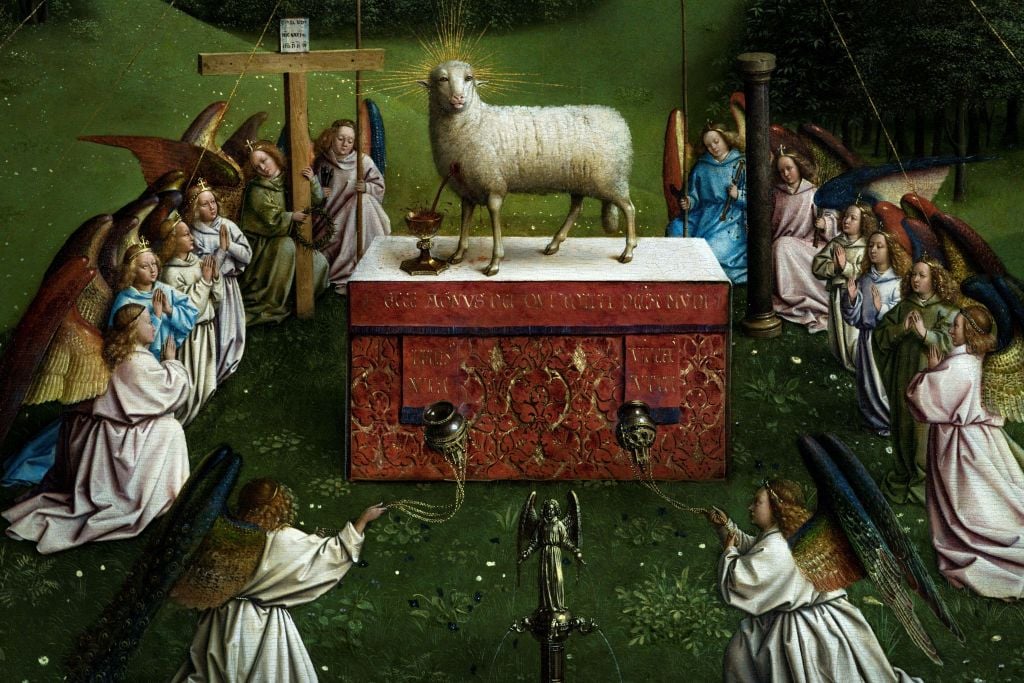
One of the world’s most famous paintings has been restored to its original state—and it’s freaking everyone out.
Thought to be one of the first works of art made with oil paint, the Flemish brothers Jan Van Eyck and Hubert Van Eyck created the Ghent Altarpiece in St. Bavo’s Cathedral in Belgium in 1432. Across 12 panels, it depicts Christ, the Virgin Mary, Adam and Eve, and other biblical figures in allegorical scenes.
Central to the work is the Adoration of the Mystic Lamb, an elaborate painting in the painting’s bottom register which depicts the Lamb of God—a symbol for Jesus—atop an altar, surrounded by angels, prophets, and a dove representing the Holy Spirit. Yet, despite being the focus of study for generations of obsessive art historians, only in the last decade did researchers come across a crucial discovery: that much of the canvas, including the holy lamb, had been painted over in the 16th century.
Now, as the painting is about to go on view in a once-in-a-lifetime Jan van Eyck exhibition in Belgium next week, the country’s Royal Institute for Cultural Heritage has revealed the results of its eight-year, $2.4 million restoration effort.
To put it mildly, it caught a lot of people by surprise. The lamb, once depicted as soft and wise, has been revealed to have human-like eyes, a chiseled snout, and is, well, just kind of…baaaaa’d. (It’s also like an animorph mid-transformation.)
The Van Eyck brothers’ original lamb has already become an online meme and drawn comparisons to Monkey Christ, Black Philip from The Witch, Derek Zoolander, and Steve Buscemi. The lamb now even has his own Twitter profile. (He will not follow you back.)
This is just the latest chapter in the incredibly turbulent history of the Ghent Altarpiece, which has over the years been copied, altered, and censored. It has been nearly destroyed by fire on multiple occasions and stolen dozens of times, including by Napoleon and Hitler. (No wonder the lamb looks the way he does: he’s seen some shit.)
“Thanks to this restoration, you can once again enjoy the full color richness that was established 500 years ago by Jan Van Eyck,” said first deputy Kurt Moens of the province of East Flanders in a statement. “Standing face to face with the Mystic Lamb is a particularly intense encounter, something that every Fleming should experience at least once in his life.”
The newly restored painting will make its public debut February 1 in “Van Eyck: An Optical Revolution” at the Museum of Fine Arts Ghent.